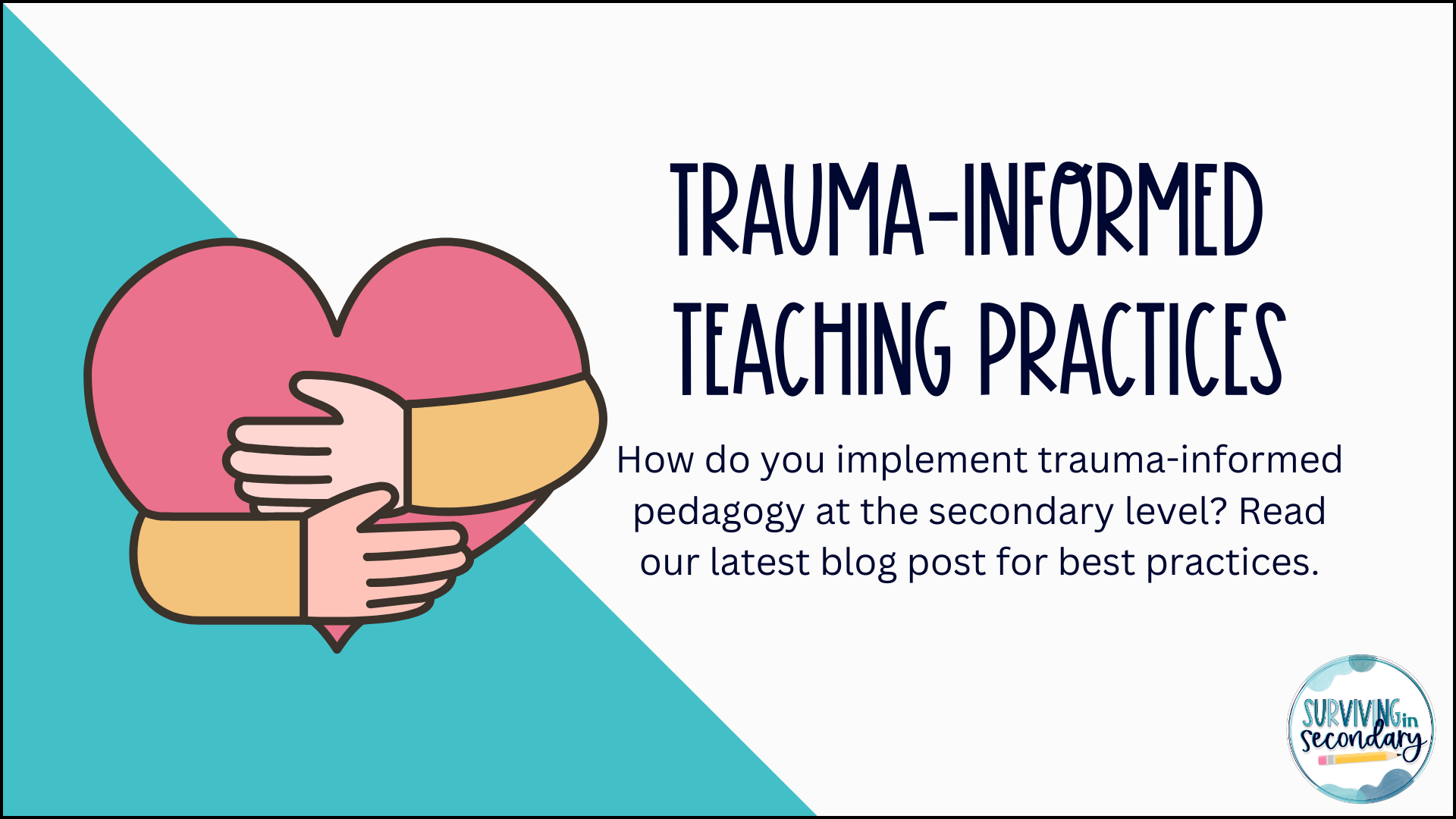Trauma-Informed Teaching in the High School Classroom

By Kasi @ Surviving in Secondary
In today’s high school classrooms, students bring with them a wide range of life experiences—some of which may include trauma. Trauma can stem from many sources: family challenges, community violence, loss, poverty, or even global events. While teachers cannot change these experiences, they can create classrooms that feel safe, predictable, and supportive. That’s where trauma-informed teaching comes in.
What Is Trauma-Informed Teaching?
At its core, trauma-informed teaching recognizes that past experiences can affect how students learn, behave, and interact. It takes into account that students are shaped by their experiences and instead of asking “What’s wrong with this student?” When something negative occurs, trauma-informed educators ask “What might this student need right now in order to succeed in their current environment?”
What practical strategies support students who may be carrying hidden challenges?
Although you won’t always know what hidden challenges your students are facing when they sit in your classroom, there are some tried and true practices that can support them and guide them to feel safe and secure as they grow in your classroom.
1) Build Predictability and Structure
Trauma often creates a sense of chaos. Whether it happened 5 years ago, or even more recently, the lack of predictability can be scary. A consistent routine, clear directions, and posted agendas help students feel secure and reduce anxiety.
2) Value the Relationship
A caring, supportive connection with a trusted adult can be one of the strongest protective factors for a student. Simply incorporating check-ins, using students’ names, and showing genuine interest in their lives can matter more than you may realize.
3) Offer Choice to Build Student Ownership
Trauma can leave students feeling powerless. Offering options, such as choosing between two assignments or creating a poster vs. a digital presentation, can help students feel like they have a sense of control.
4) Model Emotional Regulation
High school students watch how adults manage stress. By modeling calm responses, naming emotions, and practicing self-regulation, teachers provide students with powerful coping strategies.
5) Be Aware of Triggers
Alert your students before any loud noises, sudden changes, or certain topics that can trigger stress responses. While you can’t predict everything, being mindful and checking in with students before a potentially distressing moment goes a long way.
6) Why It Matters
Trauma-informed practices don’t just benefit students who have faced adversity—they create a healthier classroom culture for everyone. When students feel safe, understood, and respected, they are more likely to take academic risks and engage meaningfully in learning.
As a high school teacher, you won’t know everything about your students’ lives, but you can create a classroom where they feel supported. That kind of environment can make a big difference in engagement and learning.
Let's keep in touch! Fill out the form below to join our email list for updates, exclusive freebies, giveaways, and more!
Thanks for joining us!
Check your email :)
